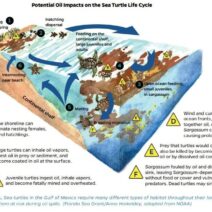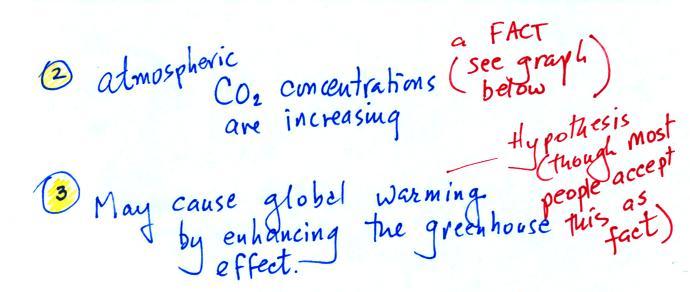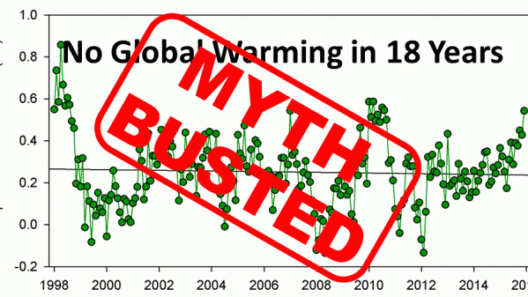The world is at a tipping point, grappling with the inexorable rise in atmospheric carbon dioxide (CO2) levels and its implications for global warming. Understanding how these increasing concentrations of CO2 catalyze changes in climate patterns is essential for informed conversations about environmental policies and personal choices. This dialogue not only demands a grip on the underlying scientific principles but also an examination of how these elements converge to create profound impacts on our planet.
At its core, the phenomenon of rising atmospheric CO2 levels is tied to the greenhouse effect, a natural process that warms the Earth’s surface. Sunlight strikes the Earth, and a portion of that energy is absorbed, warming the planet. However, some of this energy is re-radiated back into space as infrared radiation. CO2, alongside other greenhouse gases, traps a fraction of that outgoing radiation, akin to a thermal blanket, leading to an increase in atmospheric temperatures. This simple mechanism, however, belies the complexity of the interplay between human activities and natural systems.
Historically, CO2 levels hovered around 280 parts per million (ppm) for thousands of years, a relatively stable figure prior to the Industrial Revolution. However, the advent of fossil fuel combustion—coal, oil, and natural gas—introduced unprecedented quantities of CO2 into the atmosphere. As of recent measurements, concentrations have surged beyond 400 ppm. This remarkable increase over such a short geological timespan is unprecedented and correlates with a marked rise in global temperatures.
But why should this dramatic increase in CO2 levels be alarming? The answer resides in the delicate balance of our planet’s climate system. Elevated CO2 levels enhance the greenhouse effect, leading to a cascade of consequences that ripple through various environmental dimensions. Altered weather patterns, more frequent and severe heatwaves, and shifts in precipitation are all manifestations of this warming trend.
One of the most compelling understandings of this dynamic is the concept of positive feedback loops. For instance, as CO2 levels rise and temperatures increase, the capacity of the oceans to sequester carbon diminishes. Warmer waters hold less dissolved gas, causing further atmospheric CO2 accumulation. Concurrently, melting polar ice due to rising temperatures reduces the Earth’s albedo effect; the planet reflects less sunlight and absorbs more heat, further exacerbating warming. These feedback loops create a self-reinforcing cycle that accelerates climate change and complicates mitigation efforts.
Moreover, the consequences of rising CO2 levels extend beyond mere temperature increases. Ocean acidification is an insidious impact that stems from excess CO2 absorption by seawater. With more CO2 dissolving in the oceans, carbonic acid formation occurs, jeopardizing marine ecosystems, particularly corals and shellfish, fundamentally shifting marine biodiversity and contributing to declines in fish populations that many depend on for sustenance.
Addressing the role of CO2 in global warming also leads to considerations of adaptation and mitigation strategies. As the planet warms, communities must adapt to changing conditions, including altering agricultural practices, designing resilient infrastructure, and implementing water conservation measures. Concurrently, nations are urged to mitigate carbon emissions by transitioning to renewable energy sources, enhancing energy efficiency, and promoting carbon capture technologies. Such measures represent not only a vital response to rising CO2 levels but also an opportunity to innovate and drive economic recovery toward sustainable models.
The narrative surrounding atmospheric CO2 levels is not merely one of doom and gloom; it is also one of hope and potential. With increased awareness of the intricacies of climate science, individuals possess the power to effect change through informed decision-making. From advocating for systemic change to adopting sustainable practices in daily life, every action contributes to the broader quest for environmental justice. Furthermore, research continues to illuminate pathways toward carbon neutrality and environmental stewardship, underscoring humanity’s capacity for ingenuity in the face of adversity.
Engaging with the science behind rising atmospheric CO2 levels invites a reevaluation of our relationship with the planet. It challenges us to confront the reality of our impacts while simultaneously offering a narrative of resilience. The consequences of our emissions are tethered to our future—one defined by the choices we make today. The urgency to understand the mechanisms behind the numbers is more than an academic pursuit; it is a call to action for all who inhabit this fragile Earth.
In conclusion, the escalating levels of atmospheric CO2 are emblematic of a broader climate crisis that demands immediate and concerted efforts. The scientific principles elucidating the greenhouse effect, coupled with the ramifications of global warming phenomena, designate a clear trajectory that humanity must navigate thoughtfully. Through a nuanced understanding of these dynamics, a shift in perspective can catalyze the necessary actions to forge a sustainable path forward, where ecological balance can be restored, and future generations may thrive. The time for awareness is now; the responsibility rests upon us all.








